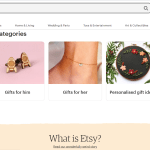Introduction.
Instagram has become one of the top social media platforms for creators, influencers, and entrepreneurs.
But did you know it’s also a fantastic place to sell eBooks? With over a billion monthly active users, Instagram provides a unique opportunity to reach readers in a visual, interactive way.
Selling eBooks on Instagram is about more than just posting about your latest release; it’s about building a community, sharing valuable insights, and making the buying process smooth and enjoyable.
In this article, I’ll cover the ins and outs of selling eBooks on Instagram. From setting up your profile to creating engaging content and using Instagram’s e-commerce features, this guide is packed with practical steps you can implement today.
Why Instagram Works for Selling eBooks
Instagram is ideal for eBook marketing because it’s visually driven and interactive, making it easy to showcase the benefits of your book while connecting directly with readers.
Plus, with features like Instagram Stories, Highlights, and Reels, you can get creative in how you market your content.
- High Engagement: With its emphasis on visuals and video, Instagram has one of the highest engagement rates of any social media platform.
- Storytelling Platform: Instagram lets you tell your story in ways that connect deeply with your audience, giving you tools to share snippets, quotes, and personal stories related to your eBook.
- Audience Reach: Instagram has over 1 billion monthly users worldwide, which gives you access to readers from all backgrounds and interests.
How Do I Sell eBooks On Instagram?
Step 1: Optimize Your Profile for eBook Sales.
Your Instagram profile is the first impression potential readers will have, so make it count. Here’s what you can do to make it work as a sales tool:
- Professional Bio: Describe what your book offers and why it matters. Use keywords relevant to your eBook’s topic to attract followers interested in that niche.
- Add a Link in Bio: Use this link to direct users to your sales page or a link aggregator like Linktree that includes links to multiple resources.
- Highlight Sales or Reviews: Use your Instagram Highlights to feature reader testimonials, sample content, or any promotional posts to keep them accessible.
Step 2: Content Strategies to Engage Your Audience.
Content is the heart of Instagram marketing, and you’ll need a steady flow of engaging posts to keep people interested. Here’s a breakdown of content types that work particularly well for eBook sales.
1. Quotes and Excerpts
- Share bite-sized excerpts or quotes from your eBook. You can design these posts with tools like Canva to create an eye-catching, branded look. For example, try sharing a thought-provoking quote that will resonate with your target readers and spark interest in your content.
2. Behind-the-Scenes Posts
- Share the process of writing your eBook, what inspired it, or a peek into your daily life as a writer. This can create a personal connection with your audience.
3. Reels and Stories
- Short-form videos like Reels or Stories are excellent for grabbing attention. Use them to explain a concept from your eBook, introduce characters, or even share a reader’s testimonial.
4. User-Generated Content (UGC)
- Encourage readers to share their thoughts, tag your account, and use a unique hashtag. Then, repost these on your account to build credibility and show that your audience is engaged.
Step 3: Use Instagram’s E-commerce Features.
Instagram has added several e-commerce tools that make selling directly from the platform easier than ever. Here are some worth exploring:
- Instagram Shop: If you have a business account, you can create an Instagram Shop with a “product” page for your eBook. This feature allows users to purchase directly from Instagram or be redirected to your sales page.
- Shoppable Posts: Once your eBook is in your Instagram Shop, you can tag it in posts. This feature is available to business accounts and makes it easy for followers to buy with a single tap.
- Stories with Swipe-Up Links: If you have more than 10,000 followers, you can add swipe-up links in Stories, which is great for sharing limited-time offers or new releases.
Step 4: Engage with Followers to Build a Community.
To make sales, it’s not enough to post content and walk away. Interacting with followers builds trust and keeps people interested.
- Respond to Comments: Engage in the comments section by answering questions and thanking readers for their support.
- Direct Messages (DMs): Open up conversations in DMs. You might answer questions, provide extra details about the book, or even offer a small discount to close a sale.
- Live Sessions: Use Instagram Live to host a Q&A about your book, discuss your writing journey, or do a live reading. Live sessions give readers a chance to connect with you in real-time and feel part of your story.
Step 5: Run Promotions and Collaborations.
Running promotions or collaborations can help you reach a wider audience.
- Limited-Time Discounts: Offer discounts for followers, especially if you’re launching a new book or celebrating a milestone.
- Collaborate with Influencers: Partner with Instagram influencers in your niche to expand your reach. For example, you could send a free copy of your eBook to a book reviewer with a large following.
- Giveaways: Organize giveaways, where followers have to tag friends or share your post. This can increase your visibility and attract new followers.
Pros and Cons of Selling eBooks on Instagram
Every sales channel has its advantages and disadvantages, and Instagram is no exception.
Pros
- High Engagement: Instagram’s design naturally encourages engagement through likes, comments, and shares.
- Visual Appeal: The visual format allows for creative marketing, especially for eye-catching book covers or excerpts.
- Direct Interaction: You can communicate directly with potential readers through comments, DMs, and Lives.
Cons
- Time-Intensive: Managing a successful Instagram account requires time to create content, engage with followers, and keep up with trends.
- No Direct Payment Integration: Although Instagram’s shopping features are useful, it lacks direct payment tools like a website’s checkout system.
- Algorithm Dependency: Instagram’s algorithm can affect the visibility of your posts, meaning that high-quality content doesn’t always guarantee high reach.
Conclusion
Selling eBooks on Instagram can be a powerful way to reach new readers and build a community around your work.
With the right strategies, from engaging content to savvy use of Instagram’s sales features, it’s possible to create a sustainable sales channel on this platform. So, are you ready to turn your Instagram into an eBook powerhouse?





GIPHY App Key not set. Please check settings